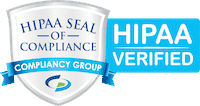Riverside, CA: A Look at the Future of Claims Management Software in 2024
July 25, 2024
In the complex landscape of insurance, Third Party Administrators (TPAs) play a crucial role in managing claims efficiently and effectively. With the advent of technology, specifically TPA software, the process has become more streamlined, empowering insurance providers and TPAs alike to navigate the intricate web of claims management with ease. In this comprehensive guide, we delve into the world of TPA software, exploring its functionalities, benefits, and the transformative impact it has on claims management processes.
Understanding TPA Software
TPA software is a specialized solution designed to facilitate claims administration for insurance carriers, self-insured companies, and TPAs themselves. It encompasses a range of features tailored to automate and optimize various aspects of claims management, from intake and adjudication to payment processing and reporting. Unlike generic software solutions, TPA software is purpose-built to address the unique challenges and requirements of the insurance industry, offering scalability, flexibility, and customization capabilities.
Key Features and Functionalities
- Intuitive Claims Intake: TPA software simplifies the process of capturing claim information, allowing for seamless data entry through customizable forms and interfaces. This feature ensures accuracy and completeness from the outset, laying a solid foundation for subsequent claim processing.
- Automated Adjudication: One of the most significant advantages of TPA software is its ability to automate claim adjudication, leveraging predefined rules and algorithms to assess eligibility, coverage, and reimbursement amounts. By streamlining this critical step, TPAs can expedite decision-making while minimizing errors and discrepancies.
- Real-time Communication: Effective communication is paramount in claims management, and TPA software facilitates seamless collaboration between stakeholders, including insurers, adjusters, and policyholders. Through integrated messaging systems and notifications, all parties stay informed and engaged throughout the claims lifecycle, fostering transparency and trust.
- Document Management: TPA software provides robust document management capabilities, enabling users to securely store, retrieve, and share pertinent documents and files. From medical records and accident reports to policy documents and correspondence, all documentation is centralized within the software, enhancing accessibility and compliance.
- Claims Analytics and Reporting: Data-driven insights are instrumental in optimizing claims processes and identifying trends or anomalies. TPA software offers advanced analytics and reporting tools that empower users to extract actionable intelligence from claim data, driving informed decision-making and continuous improvement initiatives.
Benefits of TPA Software
- Enhanced Efficiency: By automating routine tasks and streamlining workflows, TPA software significantly improves operational efficiency within claims departments. Manual processes are minimized, reducing the time and resources required for claims administration while increasing throughput and scalability.
- Improved Accuracy and Compliance: Manual errors and compliance lapses can have far-reaching consequences in claims management. TPA software mitigates these risks by enforcing standardized processes, ensuring regulatory compliance, and enhancing data accuracy through validation checks and audit trails.
- Faster Claim Processing: The automation capabilities of TPA software expedite claim processing times, enabling faster resolution and payment to policyholders. This not only enhances customer satisfaction but also reduces the administrative burden on claims handlers, allowing them to focus on more complex cases.
- Cost Savings: By optimizing workflows and minimizing overheads associated with manual processing, TPA software delivers significant cost savings for insurance providers and TPAs. These savings can be reinvested into business growth initiatives or passed on to clients through competitive pricing structures.
- Scalability and Adaptability: As the insurance landscape evolves, TPA software offers scalability and adaptability to meet changing business needs and regulatory requirements. Whether expanding operations, introducing new product lines, or navigating regulatory changes, organizations can rely on TPA software to support their growth and adaptation strategies.
- Enhanced Customer Experience: Ultimately, TPA software contributes to a superior customer experience by streamlining processes, improving transparency, and expediting claims resolution. Policyholders benefit from faster payouts and greater communication, fostering trust and loyalty towards their insurance providers.
Implementation Best Practices
Implementing TPA software is a strategic endeavor that requires careful planning, execution, and ongoing support. Here are some best practices to ensure a successful implementation:
- Define Clear Objectives: Clearly articulate the goals and objectives of implementing TPA software, whether it’s improving efficiency, reducing costs, or enhancing customer satisfaction. Align stakeholders around these objectives to drive consensus and commitment.
- Engage Stakeholders Early: Involve key stakeholders, including claims managers, IT teams, and end-users, in the selection and implementation process. Their insights and feedback are invaluable in identifying requirements, assessing vendor solutions, and fostering buy-in throughout the organization.
- Customization and Configuration: Work closely with the software vendor to customize and configure the TPA software according to your organization’s unique needs and workflows. This may involve defining rules, workflows, user roles, and system integrations to ensure seamless integration with existing systems and processes.
- Comprehensive Training and Support: Invest in comprehensive training and ongoing support to empower users with the knowledge and skills needed to leverage TPA software effectively. This includes providing hands-on training sessions, user manuals, and access to technical support resources to address any questions or issues that may arise.
- Monitor Performance and Iterate: Continuously monitor the performance and impact of TPA software on claims management processes, leveraging analytics and feedback mechanisms to identify areas for improvement. Iterate configurations, workflows, and training programs to optimize usage and maximize ROI over time.
Conclusion
TPA software represents a paradigm shift in claims management, offering unparalleled efficiency, accuracy, and agility in navigating the complexities of the insurance landscape. By leveraging advanced automation, communication, and analytics capabilities, insurance providers and TPAs can streamline operations, enhance compliance, and deliver superior customer experiences. As the industry continues to evolve, embracing TPA software is essential for staying competitive, adaptive, and future-ready in the dynamic world of insurance claims administration.
7 Features Every Online Claim Management System Needs
June 27, 2024What to Look for in Claims Management Software?
May 8, 2024









